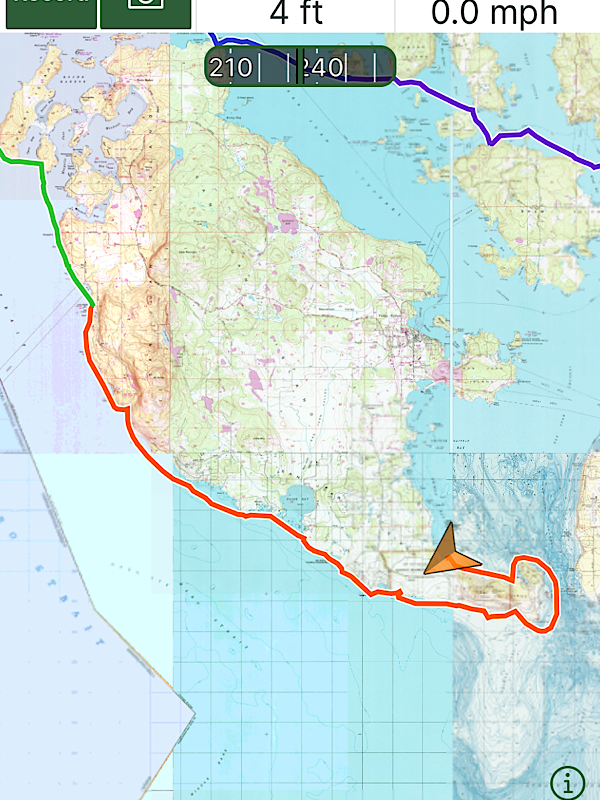
We awoke at 5:30 am and after a quick breakfast and minimal packing, were on the water by 6:30 am. The day was just awakening. The air was still and few birds were out, only the occasional gulls coasting the water’s edge looking for a quick snack. We paddled away from the County Park and were soon riding the ebb. We barely had to paddle, the currents were so strong. We sailed past the tall rocky cliffs with their seaweed decorated fringes, just barely visible in the dim light. We caught the powerful tide rips, this time using their force to ride through the standing waves and around the rocks scattered along the coastline. It was fast and dynamic paddling. Everything was flowing with us. Kelp bent over with long blades whipping in the rushing water. Gulls, more of them now, bobbing along, dabbling for food as the water swept them down the coastline. Our kayaks, lighter without all of the camping gear, responded quickly to our paddle strokes, bows turning to catch the oncoming swirls and diving headlong into the waves.
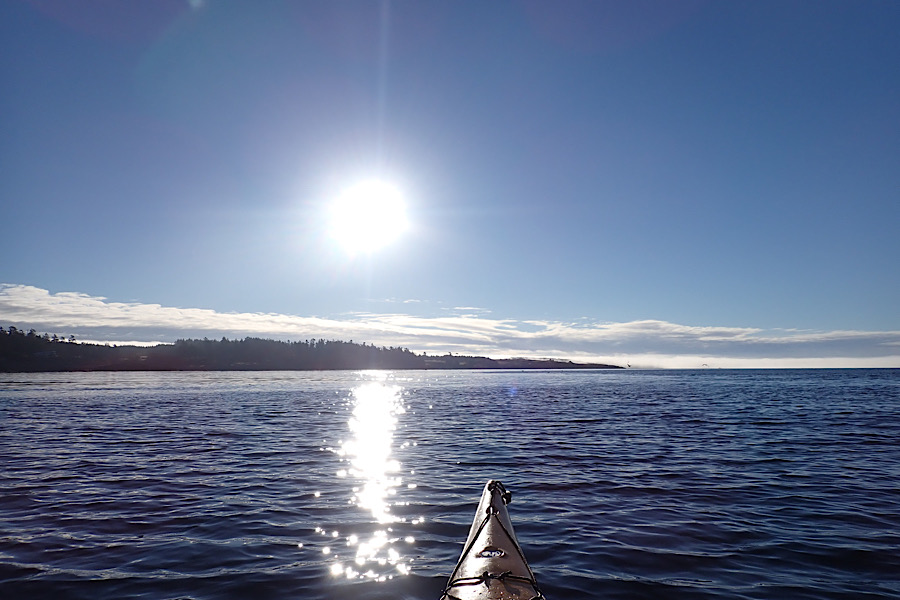
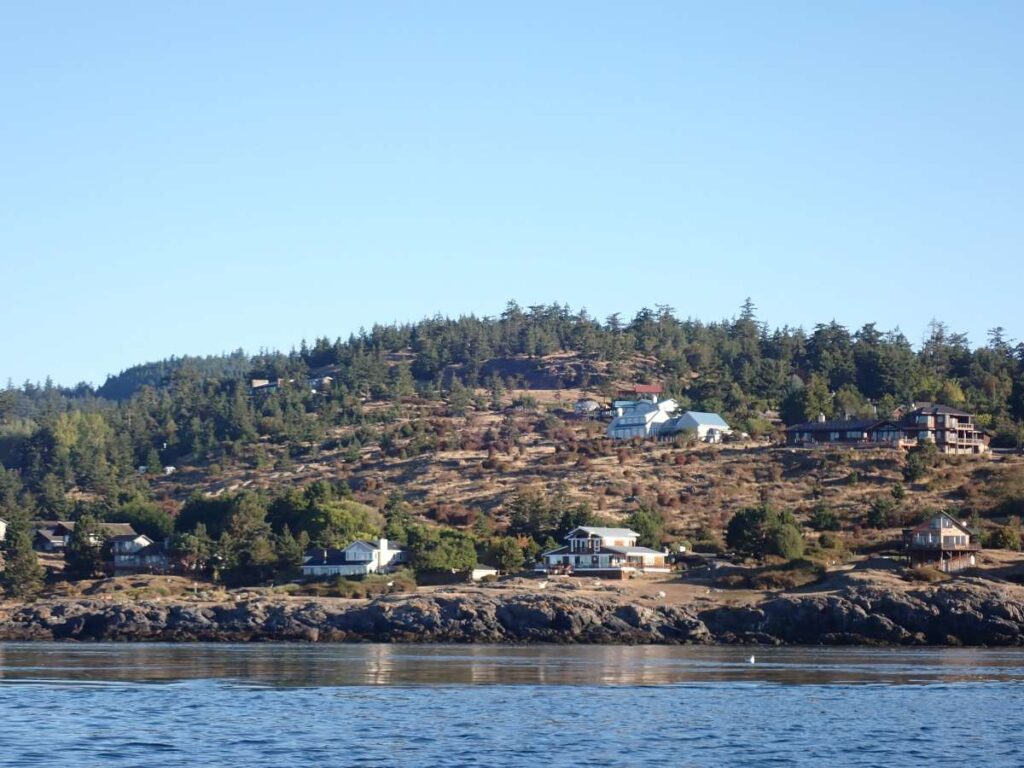
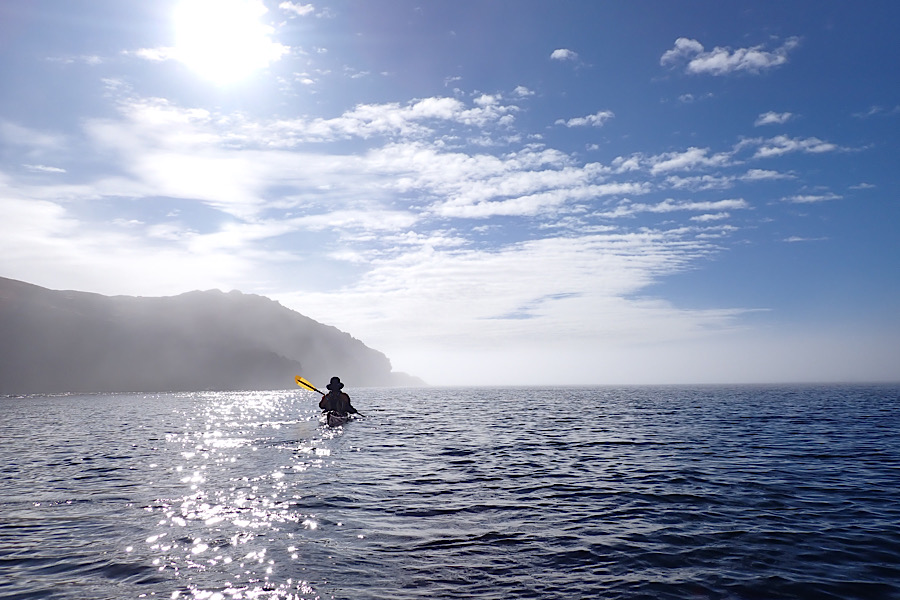
As we made our way south, the land turned eastward, and here, the landscape opened up into broad expanses of pasture and farmland. Large farms and ranches dominate this section of San Juan Island and we could see fields full of hay bales and pastures with cows. Out to sea, a dense marine layer began to creep its way up the strait, blocking our view of the Olympic Mountains. Just like the fog we’d experienced at Spencer Spit, we expected this to burn off by noon, about the same time we would be going through Cattle Pass. I hoped the fog would clear by then as running the pass in the fog would be crazy. Between current, tide rips and motorboats, we wanted to have a clear view when we made that paddle.
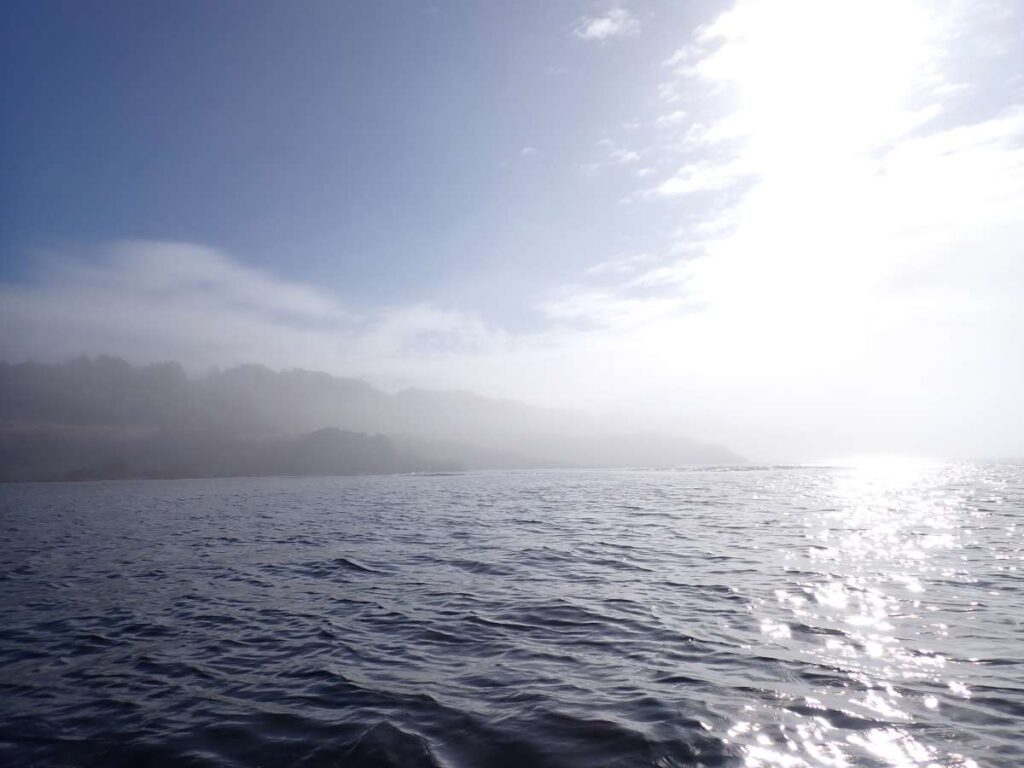
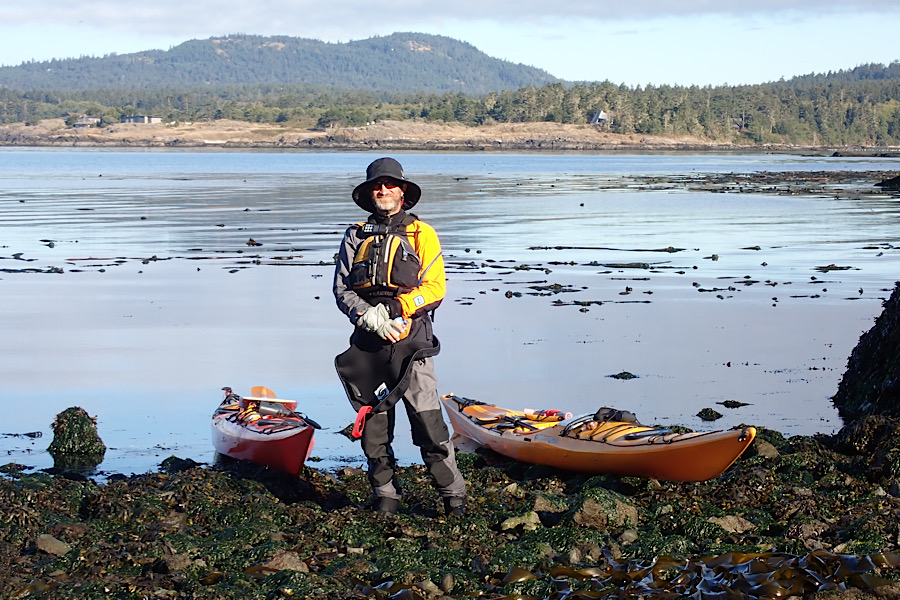
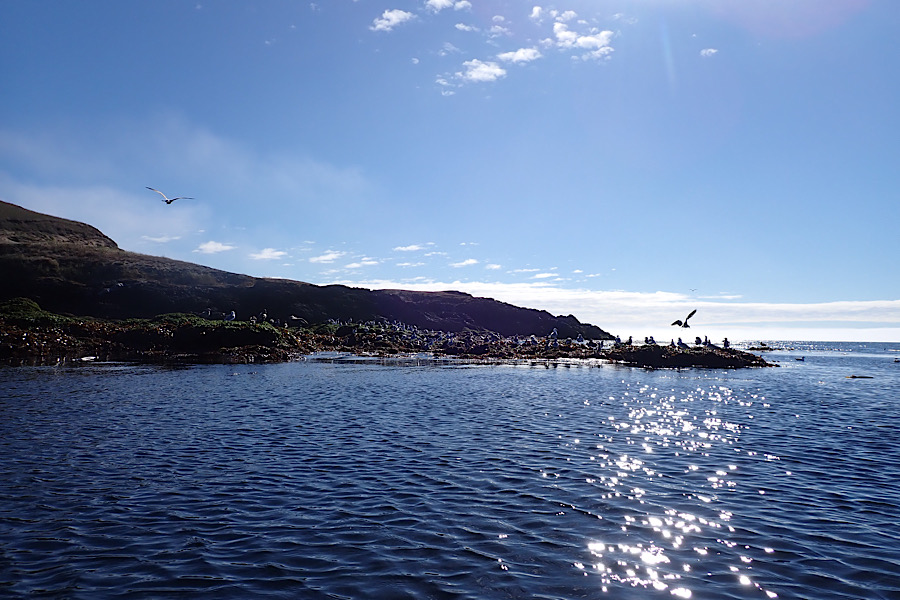
And so we continued, inching along the coastline, kept company by rafts of seabirds – scoters and rhinoceros auklets mostly – bobbing along the shoreline feeding on crustaceans in the kelp beds.